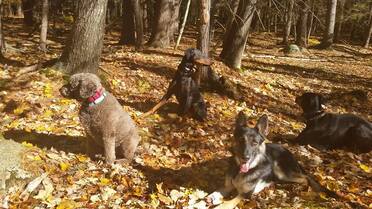
Also dog training takes four levels to complete as in one of our past blogs. Dog training requires the dog owner to be present in the training process with your dog. If you are just getting frustrated and doing the bare minimum, you are not helping your dog to be your partner. Both the dog and dog owner should be a team with a goal to get to. These goals change over time and even over a command as the circumstances get harder. So paying attention to those pesky details when dog training like how to hold the leash, body movement, foot work, and so on make communicating to your dog clearer for them to follow. Dogs do not know English, while we do use verbal cues, but they do know patterns. Be sure that you are doing those jobs as the dog owner and teacher well before expecting them to be able to follow through.
In the first teaching steps, there is really just the work and the goal is usually just that the dog starts to get it. Then there is a step that I think is an important addition to the below three Ds that I will be discussing. I don't even start the Ds until I get can performance on one verbal command without correction or reward four times in a row easily and repetitively within my number of reps at the time in non distracting situations to more distracting situations (not the most but increased).
How does one judge their progress, success and goal accomplishment when training their dogs? Many dog trainers are taught about the three Ds:
- Duration-How long can your dog hold a command until released. In order to get to your goal, the dog owner or trainer needs to build the dog's time up little by little until they can do a set of reliable reps in a row. My magic number is 4 in a row easily within a certain number of reps.
- Distance-How far away you are while the dog holds the command. Again, in order to do this you need to build up distance, and you probably will need to back down on duration at first too, and then build that up again.
- Distraction-How many environments (with all that those environments contain people, toys, food, critters, dogs, grass, trucks, cars, and so on) can your dog work reliably in with the all those measurements, which will all have to be built up again in those environments.
The first step to having an off leash dog is that the dog can do everything you want on leash first, in my opinion. I will most likely talk about off leash training sometime in the near future.
 RSS Feed
RSS Feed